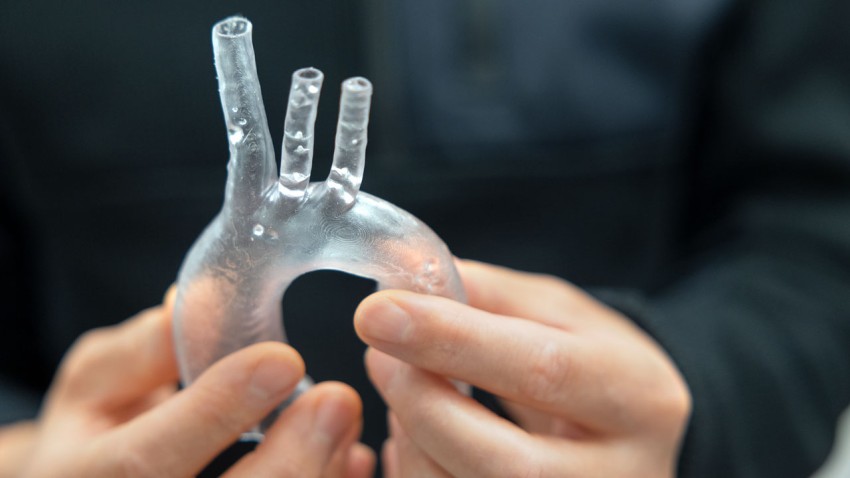Biography
Yadong Wang obtained his Ph.D. degree at Stanford University in 1999, performed his postdoctoral studies at MIT, and joined the Georgia Institute of Technology in 2003 as an assistant professor. He was recruited to Pittsburgh in 2008. He has published high-impact articles at every stage of his academic career in journals including Science, Nature Biotechnology, Nature Medicine, and PNAS. Several of his inventions are licensed, one polymer he invented is now commercially available and approved for clinical use. He co-founded two companies to translate the technologies developed in his laboratory. His research focuses on creating biomaterials that will solve key challenges in the cardiovascular, nervous and musculoskeletal systems. His team enjoys collaboration with others who share the same passion for translational research.
The Wang Lab's most mature project is artery tissue engineering. We use a biodegradable elastomer to guide cells to make living arterial tissues as the polymer degrades. The unique design of the polymer allows the synthesis of a substantial amount of elastin quickly in the engineered arterial tissue, which had been a key challenge in tissue engineering. In order to facilitate clinical translation, we refined our approach to eliminate the need of cell seeding prior to the implantation of the arterial graft. Now the transformation from a synthetic polymeric tube into an elastic artery-like tissue occurs completely in the recipient body within a few months after implantation. This broke new grounds in tissue engineering and was reported in Nature Medicine in 2012. Science Translational Medicine called the work "a departure from traditional tissue engineering". We are testing this in ovine and porcine models for application in peripheral arterial diseases, dialysis access and eventually coronary artery diseases.
Our project on controlled drug delivery focuses on protein drugs. The only successful protein drugs are those of long half-lives, such as insulin and growth hormones. Growth factors are potent molecules that guides the essential cell functions including proliferation, differentiation, and migration. However, their short half-lives have limited their clinical use over the last few decades. Heparin binds many growth factors and greatly extends their half-lives in vivo. However, [heparin:growth factor] complexes are soluble in water and will spread throughout the body inducing significant side effects. We designed a biocompatible polycation that conjugate heparin and induce phase separation (termed complex coacervation) of the [heparin:growth factor] complex. The resultant precipitate enables spatial and temporal control of the release of the growth factors, increasing the efficacy while reducing the side effects.
We have recently embarked on a project in regenerative extracellular matrix (ECM). With the strong developmental biology expertise at Cornell, my lab will expand beyond synthetic polymeric biomaterials. Many evolutionarily simpler species have amazing regeneration capabilities. A well-known example is the limb regeneration of newt. Cells are undoubtedly important for this regeneration. However, in many cases, cell fate is controlled by the ECM. ECM has been investigated in regeneration medicine for decades. However, the focus of the field is on mammalian ECM. Many target organs in regenerative medicine, such as the heart and central nerve, do not regenerate in mammals. Instead, mammalian default repair mechanism in these organs is fibrosis. I believe it is possible to harvest the regenerative capability of primitive species using their ECM. When properly decellularized, the ECM will keep many of the signaling molecules that controls cell function. Thus using a healing ECM from a primitive species will likely help mammalian tissues to regenerate.
Moving forward, I would like to initiate a project in collaboration with the computation experts at Cornell. With the presence of a very strong polymer science community at Cornell, I envision that close collaborations with polymer scientists will create biomaterials with more precise control over properties and more diverse functions. Clear guiding principles in biomaterials design and development are still elusive. A strong materiomics project that couples computation and experiments will advance this aspect of biomaterials science. I believe collectively biomaterials field has sufficient data on materials-biology interfaces that computational models will provide useful guidance on materials design.





